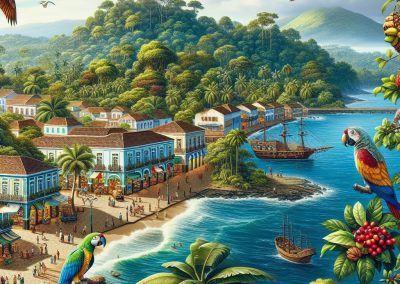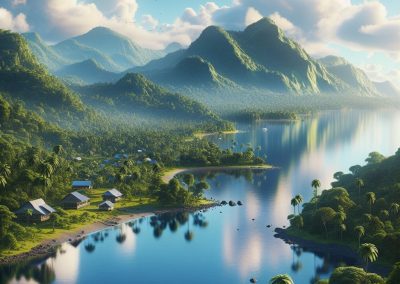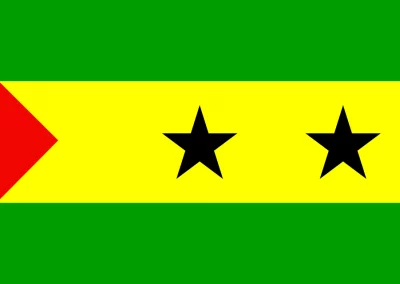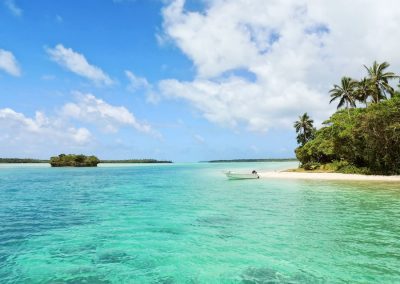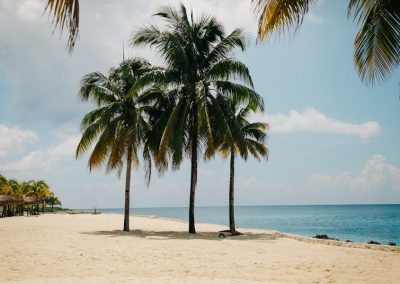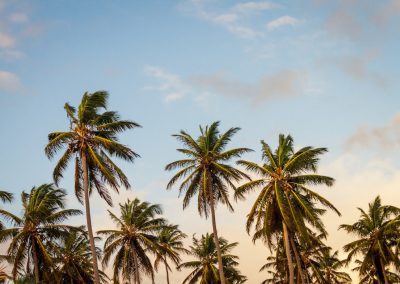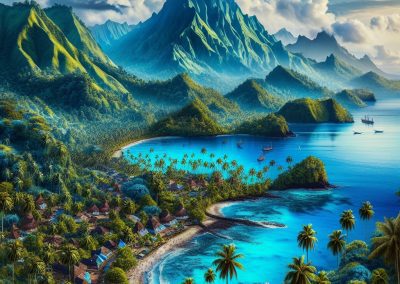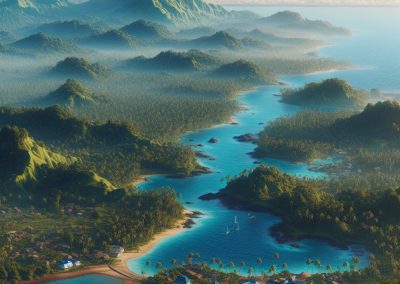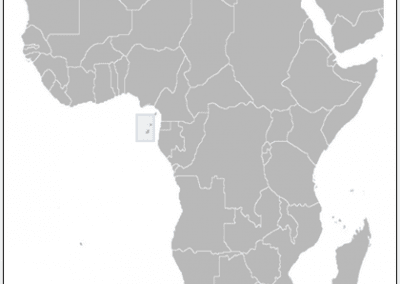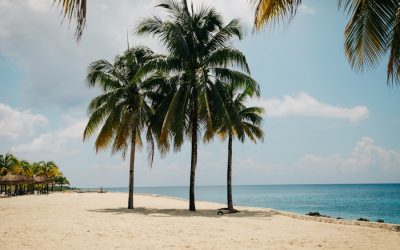Sao Tome and Principe
(República Democrática de São Tomé e Príncipe (Democratic Republic of Sao Tome and Principe))
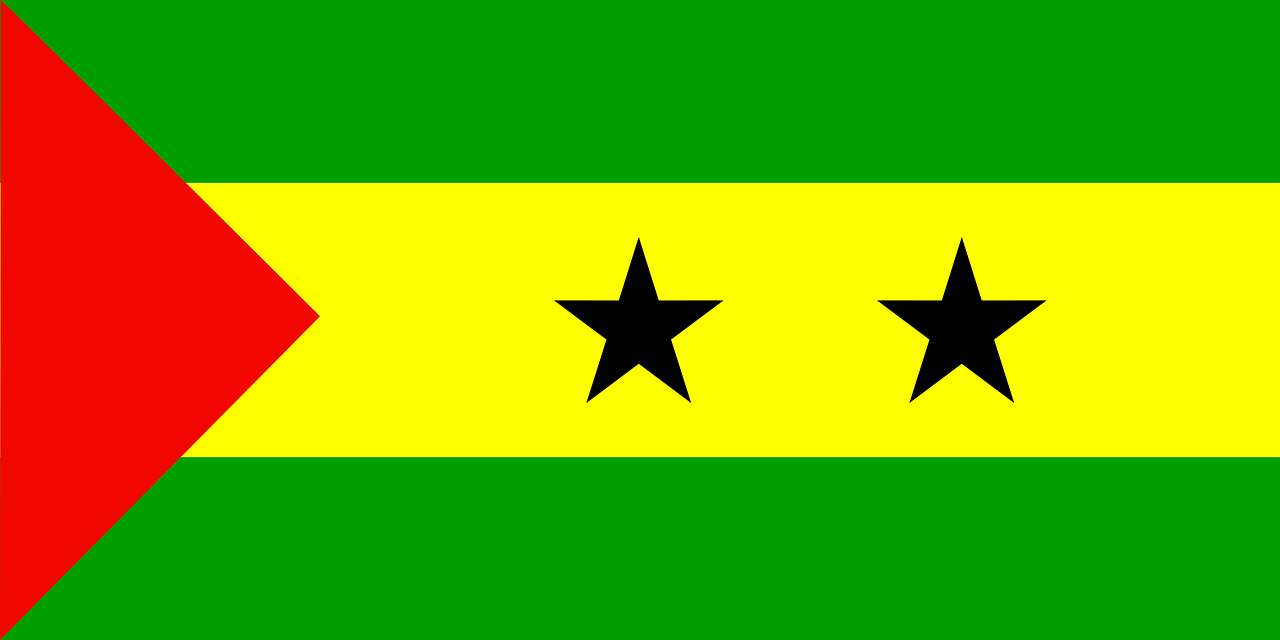
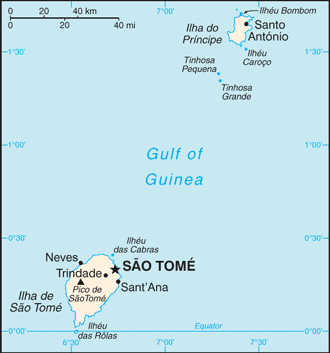
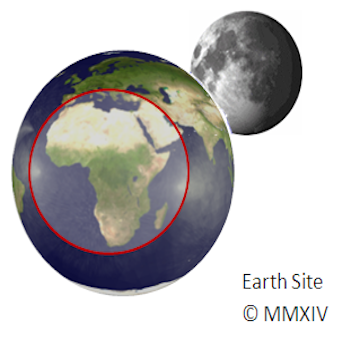
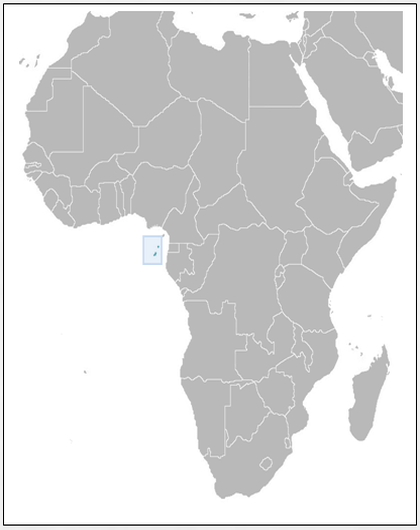

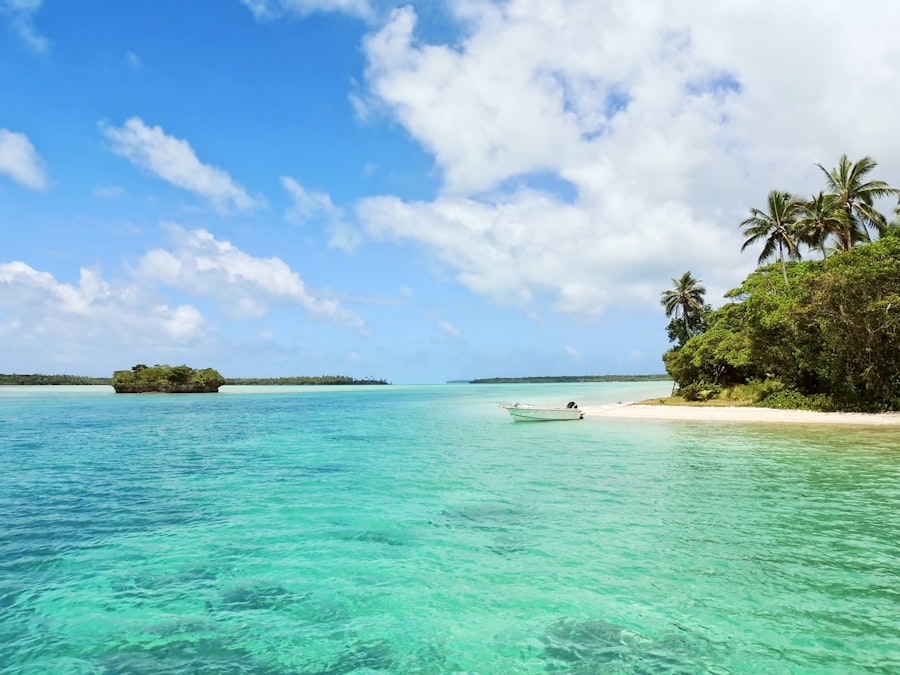
Capital: São Tomé
Population (Estimated July 2012): 183,176
Area: 1,001km2 or 386mi2
Currency: Dobra (Db)
Official Language: Portuguese
Political Information: Presidential Republic
Official Religion: No Official Religion
(approximately 70.3% of the population are Roman Catholic, 19.4% have no religious beliefs, 3.4% are Evangelical and 6.9% have other religious beliefs)
Highest Mountain: Pico de Sao Tome at 2,024m or 6,640ft
GDP Official Exchange Rate (OER is more precise at gauging a country’s economic power)
(Estimated 2011): $200 million (US$) or (GBP)
GDP (OER) Per Capita (per member of the population estimated 2011): (US$) or (GBP)
GDP Purchasing Power Parity (PPP is good for gauging living conditions and the use of resources but is not as accurate as OER. This data has been calculated based on the sum value of all goods and services produced in the country valued at prices prevailing in the United States)
(Estimated 2011): $306 million (US$) or (GBP)
GDP (PPP) Per Capita (per member of the population estimated 2011): (US$) or (GBP)
Time Zone (GMT/UTC): GMT
Wildlife:
Counties/Provinces/States: 2 provinces; Principe, Sao Tome
Leaders: President Manuel Pinto da Costa with Prime Minister Patrice Trovoada
Additional: Gained independence from Portugal on the 12th of July 1975.
Sources: CIA World Fact Book, Encyclopaedia Britannica.
Sao Tome and Principe
Sao Tome and Principe, an archipelago located in the Gulf of Guinea, is one of Africa’s smallest and least explored nations. Comprising two main islands, Sao Tome and Principe, along with several smaller islets, this nation is renowned for its stunning landscapes, rich biodiversity, and vibrant culture. The islands are situated approximately 250 kilometres off the western coast of Central Africa, making them a unique blend of African and Portuguese influences.
With a population of around 200,000 people, Sao Tome and Principe is often overlooked by tourists in favour of more prominent destinations, yet it offers a wealth of natural beauty and cultural heritage that is both captivating and enriching. The islands’ isolation has contributed to their unique identity, characterised by a mix of African traditions and Portuguese colonial history. The official language is Portuguese, a remnant of the colonial era, while local dialects and languages reflect the diverse ethnic backgrounds of the inhabitants.
The economy is primarily based on agriculture, particularly cocoa production, which has historically been the backbone of the islands’ economy. Despite its small size, Sao Tome and Principe boasts a rich tapestry of cultural practices, music, and art that reflect the resilience and creativity of its people. As the nation continues to develop, it faces both challenges and opportunities that will shape its future trajectory.
Summary
- Sao Tome and Principe is a small island nation in the Gulf of Guinea, known for its stunning natural beauty and rich cultural heritage.
- The country has a complex history of colonial influence, with both Portuguese and Dutch settlers leaving a lasting impact on its culture and traditions.
- Sao Tome and Principe’s geography is characterised by lush rainforests, volcanic peaks, and beautiful beaches, while its tropical climate makes it a popular destination for ecotourism.
- The islands are home to a diverse range of flora and fauna, making them a hotspot for biodiversity and a prime location for ecotourism activities.
- The country’s economy is largely dependent on agriculture, with cocoa and coffee being the main exports, while its political landscape and governance face challenges in ensuring stability and development.
History and Colonial Influence
The history of Sao Tome and Principe is deeply intertwined with colonialism, beginning in the late 15th century when Portuguese explorers first arrived on the islands. The Portuguese established sugar plantations in the 16th century, which relied heavily on enslaved African labour. This period marked the beginning of significant demographic changes as enslaved individuals were forcibly brought from various parts of Africa to work on the plantations.
The islands became a crucial part of the transatlantic slave trade, serving as a staging ground for the transportation of enslaved Africans to the Americas. This dark chapter in history has left an indelible mark on the islands’ cultural landscape, influencing everything from language to social structures. As the sugar industry declined in the 19th century, cocoa emerged as the primary cash crop, leading to further economic exploitation and social stratification.
The colonial administration implemented policies that favoured plantation owners while marginalising local communities. It was not until the mid-20th century that movements for independence began to gain momentum. The struggle for self-determination culminated in 1975 when Sao Tome and Principe finally achieved independence from Portugal.
This transition was marked by a desire to reclaim cultural identity and establish a new political framework that would prioritise the needs of its citizens. However, the legacy of colonialism continues to influence contemporary society, as the nation grapples with issues related to governance, economic development, and social equity.
Geography and Climate
Sao Tome and Principe is characterised by its lush landscapes, volcanic origins, and diverse ecosystems. The larger island of Sao Tome features a mountainous terrain with peaks that rise dramatically from the coastline, while Principe is smaller and less populated but equally stunning in its natural beauty. The islands are surrounded by rich marine environments that support a variety of marine life, making them an attractive destination for ecotourism.
The interior regions are covered with dense rainforests that are home to numerous endemic species, contributing to the island’s reputation as a biodiversity hotspot. The climate in Sao Tome and Principe is tropical, with a wet season from October to May and a dry season from June to September. This climate supports a rich array of flora and fauna, including many species that are unique to the islands.
The rainfall during the wet season nourishes the lush vegetation, while the dry season provides a respite from humidity. However, climate change poses significant challenges for this small nation, as rising sea levels and changing weather patterns threaten both agriculture and coastal communities. Understanding the geography and climate of Sao Tome and Principe is essential for developing sustainable practices that can protect its natural resources while promoting economic growth.
Biodiversity and Ecotourism
The biodiversity of Sao Tome and Principe is one of its most remarkable features, with a wealth of endemic species found nowhere else on Earth. The islands are home to unique flora such as the giant dragon tree and various species of orchids that thrive in their rich volcanic soil. Additionally, the avian population includes several endemic birds like the Sao Tome fiscal and the Principe kingfisher, making it a paradise for birdwatchers and nature enthusiasts alike.
The surrounding waters are equally rich in biodiversity, hosting vibrant coral reefs teeming with marine life, including turtles, dolphins, and an array of fish species. Ecotourism has emerged as a vital sector for Sao Tome and Principe’s economy, offering opportunities for sustainable development while preserving its natural heritage. The government has recognised the potential of ecotourism to attract visitors who are interested in exploring the islands’ unique ecosystems while contributing to local communities.
Initiatives such as guided nature walks, birdwatching tours, and marine conservation projects have been developed to promote responsible tourism practices. However, balancing tourism growth with environmental conservation remains a challenge as increased visitor numbers can put pressure on fragile ecosystems. By fostering sustainable tourism practices, Sao Tome and Principe can protect its biodiversity while providing economic opportunities for its residents.
Culture and Traditions
The culture of Sao Tome and Principe is a vibrant tapestry woven from African traditions and Portuguese influences that have evolved over centuries. Music plays a central role in the cultural life of the islands, with genres such as “tchiloli” and “samba” reflecting the rich heritage of storytelling through song and dance. Traditional instruments like the “cavaquinho” (a small stringed instrument) accompany performances that often celebrate historical events or everyday life.
Festivals are an integral part of cultural expression, with events such as the annual “Festa de São Tomé” showcasing local customs, culinary delights, and artistic performances that bring communities together. Culinary traditions also reflect this blend of influences, with dishes featuring ingredients such as fish, cassava, rice, and tropical fruits being staples in local diets. The use of spices and cooking techniques passed down through generations adds depth to the flavours found in traditional meals.
Additionally, local crafts such as pottery, weaving, and wood carving highlight the artistic talents of the people while serving as a means of preserving cultural heritage. As Sao Tome and Principe continues to navigate modernity, there is a growing emphasis on preserving these traditions while embracing new forms of expression that resonate with younger generations.
Economy and Agriculture
The economy of Sao Tome and Principe has historically relied on agriculture, particularly cocoa production, which has been a cornerstone of its economic development since colonial times. Cocoa remains one of the primary exports, contributing significantly to national income despite fluctuations in global market prices. Other agricultural products include coffee, bananas, and palm oil; however, many farmers still rely on subsistence farming practices that limit their ability to engage fully in commercial markets.
The government has recognised the need for diversification within the agricultural sector to enhance food security and reduce dependency on cocoa exports. In recent years, efforts have been made to promote sustainable agricultural practices that can improve productivity while protecting natural resources. Initiatives aimed at training farmers in organic farming techniques have gained traction as consumers increasingly seek ethically produced goods.
Additionally, there is potential for developing sectors such as tourism and fisheries to complement traditional agriculture. By investing in infrastructure improvements and fostering partnerships with international organisations focused on sustainable development, Sao Tome and Principe can create a more resilient economy that benefits its citizens while preserving its unique environment.
Political Landscape and Governance
Sao Tome and Principe operate as a democratic republic with a multi-party system; however, its political landscape has been marked by instability since gaining independence in 1975. Frequent changes in government have led to periods of political turmoil characterised by coups and shifts in power dynamics among various political factions. Despite these challenges, there have been efforts to establish democratic governance through regular elections; however, issues such as corruption and lack of transparency continue to undermine public trust in political institutions.
The government faces significant challenges in addressing socioeconomic disparities while promoting inclusive governance that reflects the needs of all citizens. Civil society organisations play an essential role in advocating for human rights and social justice within this context. As Sao Tome and Principe navigates its political landscape, there is an opportunity for strengthening democratic institutions through civic engagement initiatives that empower citizens to participate actively in decision-making processes.
By fostering a culture of accountability and transparency within governance structures, the nation can work towards building a more stable political environment conducive to sustainable development.
Future Challenges and Opportunities
Looking ahead, Sao Tome and Principe faces several challenges that could impact its development trajectory significantly. Climate change poses an existential threat to this island nation; rising sea levels threaten coastal communities while changing weather patterns disrupt agricultural production—an essential component of its economy. Additionally, limited infrastructure development hampers access to essential services such as healthcare and education; addressing these issues will require strategic planning coupled with international support.
However, alongside these challenges lie opportunities for growth and innovation. The burgeoning ecotourism sector presents a chance for economic diversification while promoting environmental conservation efforts that protect biodiversity hotspots across the islands. Furthermore, investments in renewable energy sources could help reduce reliance on imported fossil fuels while enhancing energy security for local communities.
By leveraging its unique cultural heritage alongside natural resources sustainably, Sao Tome and Principe can carve out a path towards resilience—one that embraces both tradition and modernity as it navigates an uncertain future.
Discover the enchanting beauty and vibrant culture of São Tomé and Príncipe, a hidden gem off the coast of Central Africa. This fascinating destination is explored in depth in an insightful article that delves into its rich history, unique biodiversity, and the warm hospitality of its people. Whether you’re a nature lover, a history enthusiast, or simply looking for a peaceful retreat, São Tomé and Príncipe offers an unforgettable experience. To learn more about this captivating island nation, read the full article here.
FAQs
What is the official name of Sao Tome and Principe?
The official name of the country is the Democratic Republic of Sao Tome and Principe.
What is the capital city of Sao Tome and Principe?
The capital city of Sao Tome and Principe is Sao Tome.
What is the population of Sao Tome and Principe?
As of 2021, the estimated population of Sao Tome and Principe is around 219,000 people.
What is the official language of Sao Tome and Principe?
The official language of Sao Tome and Principe is Portuguese.
What is the currency used in Sao Tome and Principe?
The currency used in Sao Tome and Principe is the Sao Tome and Principe dobra (STD).
What is the climate like in Sao Tome and Principe?
Sao Tome and Principe has a tropical climate with high humidity and abundant rainfall throughout the year.
What are the main industries in Sao Tome and Principe?
The main industries in Sao Tome and Principe include agriculture, fishing, and tourism.
What are the popular tourist attractions in Sao Tome and Principe?
Popular tourist attractions in Sao Tome and Principe include Obo National Park, Pico Cao Grande, and beautiful beaches such as Praia Jale and Praia Piscina.
Exploring Sao Tome and Principe’s Political Boundaries
Sao Tome and Principe, a small island nation located in the Gulf of Guinea, is often overlooked in discussions about political geography in Africa. Comprising two main islands, Sao Tome and Principe, along with several smaller islets, this nation is not only rich in biodiversity but also steeped in a complex political history that has shaped its current boundaries. The political boundaries of Sao Tome and Principe are defined by both natural features and historical events, which have influenced its governance and international relations. The islands are situated approximately 250 kilometres off the western coast of Central Africa, making them strategically significant yet somewhat isolated. This geographical positioning has played a crucial role in the development of the nation’s identity and its interactions with neighbouring countries. The political boundaries of Sao Tome and Principe are not merely lines on a map; they represent a tapestry of cultural, historical, and social narratives that have evolved over centuries. The islands were uninhabited until the late 15th century when Portuguese explorers arrived, leading to the establishment of a colonial presence that would last for several centuries. The legacy of colonialism continues to influence the political landscape today, as the nation grapples with its past while striving for a cohesive national identity. Understanding the political boundaries of Sao Tome and Principe requires an appreciation of both its geographical context and the historical forces that have shaped its development as an independent nation. Summary Sao Tome and Principe is an island nation located in the Gulf of Guinea, with a unique political boundary shaped by its colonial history and international relations. The historical overview...
Exploring the Climate Zones of Sao Tome and Principe
Sao Tome and Principe, an archipelago located in the Gulf of Guinea, is a nation that boasts a rich tapestry of natural beauty and cultural heritage. Comprising two main...
Exploring Sao Tome and Principe’s Natural Resources
Sao Tome and Principe, a small archipelago located in the Gulf of Guinea, is often overlooked in discussions about natural resources due to its size. However, this nation boasts a wealth of natural assets that are not only vital to its economy but also play a crucial role in the ecological balance of the region. The islands, which are volcanic in origin, are characterised by lush landscapes, rich soils, and a climate that supports a diverse range of flora and fauna. The natural resources of Sao Tome and Principe encompass a variety of sectors, including agriculture, fisheries, forestry, and minerals, each contributing to the livelihoods of its inhabitants and the overall sustainability of the islands. The strategic location of Sao Tome and Principe also enhances its natural resource potential. Situated near the equator, the islands enjoy a tropical climate that fosters biodiversity and agricultural productivity. The surrounding waters are rich in marine life, providing opportunities for fishing and aquaculture. Furthermore, the volcanic soil is exceptionally fertile, making it ideal for cultivating cash crops such as cocoa and coffee, which have historically been the backbone of the islands’ economy. As the nation seeks to develop sustainably, understanding and managing these natural resources becomes increasingly important for ensuring long-term prosperity and environmental health. Summary Sao Tome and Principe is a small island nation with rich natural resources, including biodiversity, agriculture, fisheries, geology, and renewable energy sources. The islands are home to a diverse range of flora and fauna, making them a hotspot for ecotourism and conservation efforts. Agriculture plays a crucial role in the economy of Sao Tome and Principe, with...
Discovering the Cultural Treasures of Sao Tome and Principe
Sao Tome and Principe, a small island nation located in the Gulf of Guinea, is often overlooked in discussions about African countries. Comprising two main islands, Sao Tome and Principe, along with several smaller islets, this nation boasts a rich tapestry of culture, history, and natural beauty. The islands are situated approximately 250 kilometres off the western coast of Central Africa, making them one of the most isolated countries on the continent. Despite their remoteness, Sao Tome and Principe is endowed with lush rainforests, stunning beaches, and a diverse array of flora and fauna, which contribute to its appeal as a hidden gem for adventurous travellers. The population of Sao Tome and Principe is a vibrant mix of ethnicities, primarily of African descent, with influences from Portuguese colonial history. This blend has resulted in a unique cultural identity that is reflected in the islands’ languages, traditions, and daily life. Portuguese is the official language, but various creole dialects are widely spoken among the locals. The islands’ economy is primarily based on agriculture, with cocoa being the most significant export product. However, tourism is gradually emerging as a vital sector, drawing visitors eager to explore the islands’ natural wonders and rich cultural heritage. Summary Sao Tome and Principe is a small island nation off the coast of Central Africa, known for its rich cultural heritage and stunning natural beauty. The history of Sao Tome and Principe is deeply intertwined with the legacy of colonialism, slavery, and the struggle for independence, which has shaped the unique heritage of the islands. Traditional cuisine in Sao Tome and Principe is a delightful fusion...
Exploring the Diverse Terrain of Sao Tome and Principe
Sao Tome and Principe, a small archipelago located in the Gulf of Guinea, is often overlooked by travellers seeking tropical paradises. This nation, comprising two main...
Sao Tome and Principe: Exploring Population Density
Sao Tome and Principe, an archipelago located in the Gulf of Guinea, is one of Africa’s smallest and least explored nations. Comprising two main...
Sao Tome and Principe: A Brief History
The history of Angola is deeply rooted in its early settlement, which can be traced back thousands of years. The region was initially inhabited by various indigenous groups, including the Khoisan, Bantu-speaking peoples, and others who established complex societies. These communities engaged in agriculture, hunting, and trade, laying the groundwork for a rich cultural tapestry. The Bantu migrations, which began around 1000 BC, significantly influenced the demographic and cultural landscape of Angola. By the time European explorers arrived in the late 15th century, the area was home to several powerful kingdoms, such as the Kingdom of Kongo, which had established trade networks that extended across Central Africa and into Europe. The arrival of the Portuguese in 1483 marked a pivotal moment in Angola’s history. Initially, the Portuguese sought to establish trade relations, but their interests quickly shifted towards colonisation and exploitation. The establishment of Luanda in 1575 as a fortified settlement signalled the beginning of a more aggressive colonial approach. The Portuguese engaged in trade with local kingdoms, exchanging goods such as textiles and metal tools for ivory and slaves. This burgeoning relationship laid the foundation for a brutal system of exploitation that would have lasting repercussions on Angolan society. The Portuguese colonisers imposed their culture and religion on the indigenous populations, leading to significant social changes and the erosion of traditional practices. Summary Early settlement in British Guiana began with the arrival of the Dutch in the 17th century, followed by the British in the 18th century. Portuguese rule in British Guiana led to the establishment of the slave trade, which had a lasting impact on the country’s...
Discovering the Hidden Gems of Sao Tome and Principe: A Journey to the Enchanting Islands
Sao Tome and Principe is a small island nation located in the Gulf of Guinea, off the western coast of Central Africa. Comprising of two main islands, Sao Tome and Principe, as well as several smaller islets, this hidden gem is often overlooked by travellers in favour of more popular destinations. However, those who do venture to Sao Tome and Principe are rewarded with pristine beaches, lush rainforests, and a rich cultural heritage. The history of Sao Tome and Principe is deeply intertwined with its colonial past. The islands were discovered by Portuguese explorers in the late 15th century and soon became an important hub for the transatlantic slave trade. The legacy of this dark period can still be seen in the country’s culture and architecture. Today, Sao Tome and Principe is a melting pot of African and Portuguese influences, creating a unique blend of traditions, music, dance, and art. Summary Sao Tome and Principe is a lesser-known paradise with rich history and culture. The best time to visit is during the dry season from June to September, with festivals throughout the year. The beaches and coastal landscapes are stunning, with opportunities for diving and wildlife watching. The rainforests are home to unique flora and fauna, including the endemic bird species. Visiting the historic plantations and colonial architecture offers a glimpse into the country’s past. Getting to Know the Rich History and Culture of Sao Tome and Principe The colonial past of Sao Tome and Principe has had a profound impact on the culture of the islands. The Portuguese brought African slaves to work on the sugar...


